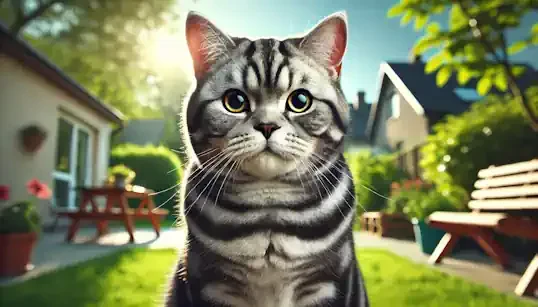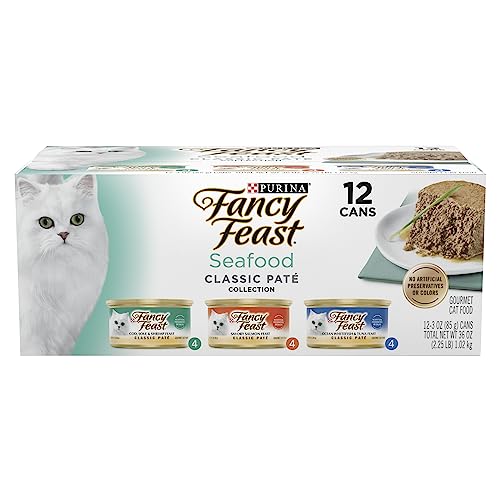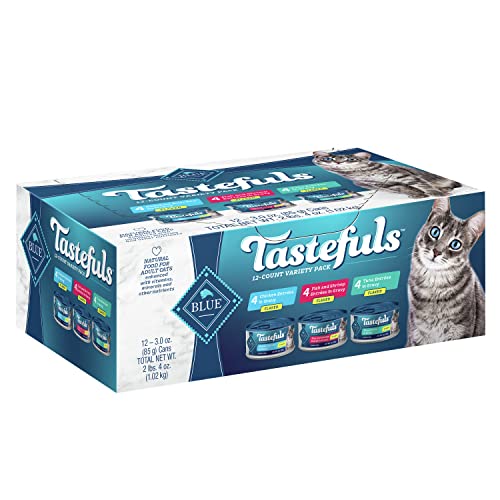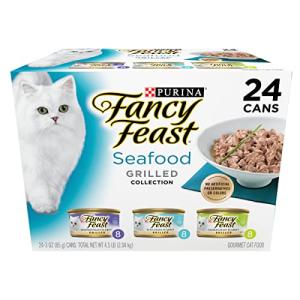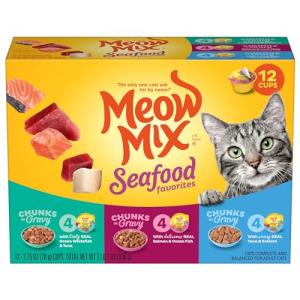Think of a classic cat. Not a fleeting trend, not a breed defined by extremes, but a cat that embodies the very essence of feline companionship – sturdy, friendly, with a contented purr rumbling in their chest and a playful spirit that endures throughout their lives. This is the American Shorthair, a breed as familiar and beloved as apple pie, as reliable as the changing seasons, and as intrinsically "All-American" as their name suggests. If you're seeking a cat that effortlessly adapts to your home, showers you with affection without being demanding, and embodies the quintessential feline companion, then you may have just discovered your perfect match in the American Shorthair. Prepare to be charmed by a breed that’s more than just a "mouser;" they are the heart of the home, a steady presence, and a loving friend, ready to enrich your life with their simple, enduring feline grace. This guide is your comprehensive journey into the world of the American Shorthair, designed to uncover their rich history, appreciate their classic beauty, understand their wonderfully balanced temperament, and learn how to provide the best possible life for one of these truly quintessential feline companions.
The story of the American Shorthair cat is deeply interwoven with the very fabric of American history, a tale that begins not in pampered palaces but in the bustling holds of ships crossing the Atlantic. Their ancestors were not bred for beauty contests or refined pedigrees; they were working cats, practical and indispensable members of early seafaring life. These hardy felines journeyed to North America alongside European settlers, possibly as early as the Mayflower voyage, though certainly in subsequent waves of immigration. Their role was not one of mere passengers; they were essential crew members, tasked with the critical job of rodent control. Ships laden with supplies and provisions were, and are, unfortunately attractive environments for mice and rats. These rodents could decimate food stores, damage ropes and rigging, and spread disease, posing a significant threat to the success of voyages and the survival of early settlements. The sturdy, agile cats brought along were the perfect solution, natural predators adept at keeping rodent populations in check, protecting valuable cargo and safeguarding the health of those aboard. These working cat ancestors were not limited to ships alone. As settlers established communities in the New World, these felines disembarked and continued their vital role on land. They became essential members of early American society, diligently controlling rodents in homes, barns, and businesses, protecting precious grain stores and helping to prevent the spread of disease in fledgling towns and farms. They weren't pets in the modern sense, but they were valued partners, respected for their skill, hardiness, and the essential service they provided in a new and often challenging environment.
Over generations, these working cats, thriving in the diverse climates and environments of North America, naturally developed into a distinct feline type. Nature itself played a key role in shaping the breed. Natural selection favoured cats that were sturdy and robust, capable of withstanding harsh weather conditions and adept at hunting in varied terrains. Cats with good hunting instincts, adaptable temperaments, and a hardy constitution were more likely to survive and thrive, passing on these desirable traits to their offspring. This natural process, over time, sculpted a population of shorthaired cats in America that were distinctly different from their European ancestors. They became more substantial in build, possessing a strength and resilience that reflected the demands of their working lives and the American landscape. As the cat fancy began to emerge in the late 19th and early 20th centuries, early cat enthusiasts recognized the inherent charm and distinctive qualities of these native shorthaired cats. They weren't exotic or deliberately sculpted breeds, but they possessed a robust beauty and a practical elegance that resonated with those who appreciated natural form and function. These early fanciers began to selectively breed these native shorthairs, not to drastically alter their appearance, but to preserve and refine their naturally occurring traits, emphasizing their sturdiness, good health, and balanced temperament. This marked the transition of these working cats from purely functional members of society to becoming a recognized and cherished breed within the burgeoning world of pedigreed cats.
In the early days of breed recognition, the American Shorthair was often simply referred to as the "Domestic Shorthair." This name, while accurate in describing their coat type and origins as cats that developed naturally within domestic environments, was also somewhat generic. It failed to distinguish them as a unique breed with their own specific history and characteristics. To differentiate them from just any shorthaired cat and to emphasize their unique American development and the dedicated breeding efforts underway, the name was eventually changed to "American Shorthair." This name change was significant, solidifying their identity as a distinctly American breed and highlighting their unique heritage. The Cat Fanciers' Association (CFA), one of the oldest and largest cat registries, was among the first to officially recognize the American Shorthair, further cementing their status and popularity. Formal breed recognition by major cat registries marked a turning point, paving the way for the development of detailed breed standards and the widespread appreciation of the American Shorthair as a distinct and beloved breed. Breed standards for the American Shorthair have been refined over time, consistently emphasizing the preservation of their sturdy build, their round, pleasant face, their short, dense coat, and their balanced, adaptable temperament. Breeders have continued to focus on maintaining these core traits, while also developing and celebrating the remarkable variety of colors and patterns that have emerged within the breed. From the iconic classic tabby patterns to solid colors, bi-colors, and beyond, the American Shorthair boasts a stunning array of coat variations, further enhancing their visual appeal and ensuring there’s an American Shorthair to capture almost any cat lover's heart. Throughout the 20th and 21st centuries, the American Shorthair has enjoyed unwavering popularity, consistently ranking among the most beloved and recognized cat breeds in North America and beyond. Their enduring appeal lies in their classic feline charm, their easygoing nature, their robust health, and their ability to seamlessly integrate into a wide variety of homes and lifestyles. They are a testament to the beauty of natural development and a living link to the practical, hardworking roots of early American life, now celebrated as a cherished and quintessential family pet.
The American Shorthair is the very picture of classic feline health and robust charm, a breed built for function and admired for their balanced proportions and wholesome appearance. Their physical attributes speak to their working cat ancestry, conveying a sense of strength, hardiness, and enduring good health. American Shorthairs are medium to large-sized cats, possessing a sturdy and muscular build that immediately conveys a sense of robustness. They are not delicate or fragile; instead, they have a substantial feel, well-boned and solidly built, conveying an impression of strength and resilience. This sturdy build is not about bulkiness, but rather about a well-balanced physique that speaks to their agile nature and athletic capabilities. Their proportions are harmonious, with all body parts in balance, contributing to their overall impression of healthy athleticism and graceful movement.
Their coat is another defining feature, perfectly suited to their practical origins and contributing to their low-maintenance appeal. The American Shorthair coat is short, dense, and hard-wearing, designed for both protection and minimal upkeep. The texture is relatively dense and close-lying, providing excellent insulation against both cold and heat while requiring only basic grooming to maintain its healthy sheen. This practical coat is a hallmark of the breed, reflecting their origins as working cats who needed a coat that could withstand varied conditions without demanding constant attention. While generally short and dense year-round, the American Shorthair coat does exhibit seasonal changes, becoming slightly thicker and denser in the winter months to provide added warmth, and then thinning out somewhat in the summer to allow for greater comfort in warmer temperatures. The American Shorthair coat is celebrated for its incredible variety of recognized colors and patterns, offering an astonishing array of visual options to suit almost any preference. In fact, there are over eighty recognized colors and patterns within the breed standard, showcasing the incredible diversity that has developed over time. Among the most iconic and well-known patterns are the classic tabby variations, including mackerel tabby (with vertical stripes) and classic or blotched tabby (with swirling, oyster-like markings). Beyond tabby, American Shorthairs are also recognized in solid colors such as white, black, blue (grey), cream, and red (orange). Bi-color patterns, featuring white combined with other colors, are also popular and recognized. Tortoiseshell and calico variations, with their striking patches of color, add further visual interest to the breed. Shaded and smoke patterns, with their subtle variations in color along the hair shaft, offer another layer of complexity to the American Shorthair coat spectrum. Breed standards emphasize the richness and clarity of color and the distinctness of patterns as desirable traits, highlighting the beauty and variety within the breed while maintaining the focus on overall health and sturdy type.
Complementing their sturdy build and varied coats are their round and pleasant heads and faces, contributing to their approachable and "sweet" expression. American Shorthairs possess a round, broad head with full cheeks and a gently rounded muzzle, lending them a soft, appealing countenance. This roundness contributes to their overall friendly and approachable appearance, avoiding any sharp or severe angles that might detract from their gentle expression. Their ears are medium-sized, proportionate to their head, slightly rounded at the tips, and set moderately apart, adding to the balanced and harmonious look of their face. Their eyes are medium to large in size, wide-set, and alert, conveying intelligence and curiosity. Acceptable eye colors in American Shorthairs range from gold to green to blue-green, depending on their coat color, with clarity and brightness being consistently valued within breed standards. Their chin is strong and well-developed, completing the balanced and robust profile of their head. Their legs are medium in length, proportionate to their body, conveying a sense of balance and sturdiness that mirrors their overall physique. These legs are well-muscled, contributing to their agility, jumping ability, and sure-footed movements. Their paws are rounded and well-padded, perfectly practical and sturdy, designed for both efficient hunting and comfortable movement across various surfaces. Finally, their tail is medium in length, proportionate to their body, thick at the base and tapering to a moderately rounded tip. It is flexible and contributes to their overall balanced silhouette, serving as a visual counterpoint to their sturdy body and rounded features. In essence, the American Shorthair’s physical attributes paint a portrait of classic feline health and enduring charm, a harmonious blend of sturdy build, practical coat, and a round, pleasant face that reflects their gentle and approachable nature – a true picture of the "All-American" feline.
The American Shorthair temperament is as balanced and appealing as their physical appearance, earning them a reputation as the "good citizen" of the cat world. They are renowned for their gentle, easygoing, and remarkably adaptable nature, making them wonderful companions for a wide variety of individuals and families. American Shorthairs possess a gentle and easygoing demeanor that is truly endearing. They are known to be good-natured, tolerant, and generally unfazed by the everyday hustle and bustle of household life. Their adaptability is a key trait; they are not overly sensitive or easily stressed, readily adjusting to changes in their environment and routines, making them well-suited to various home settings and lifestyles. Described as "amiable," they tend to approach life with a calm and steady disposition, avoiding dramatic outbursts or overly demanding behaviours.
Affection is a cornerstone of the American Shorthair personality. They are loving and devoted cats who form strong bonds with their families, thriving on human companionship and gentle interaction. They enjoy lap time, cuddling sessions, and simply being near their owners, soaking up affection and offering quiet companionship in return. However, their affection is not demanding or clingy. American Shorthairs strike a perfect balance between being loving and independent. They appreciate attention and interaction, but they are not overly needy or constantly vying for your focus. This balanced approach to affection makes them wonderfully easy to live with; they are happy to be near you and enjoy your company, but they are also content to entertain themselves when you are busy or need some quiet time. Often described as “low-maintenance” in terms of attention needs, they are not cats who will constantly pester you for playtime or demand to be the constant center of your world.
Playfulness is certainly present in the American Shorthair personality, but again, it is characterized by moderation and balance. They enjoy toys and games and appreciate interactive play sessions with their owners, exhibiting a playful spirit that endures throughout their lives. However, they are not hyperactive or constantly seeking out playtime. Their play style is more balanced and moderate, enjoying bursts of activity interspersed with periods of relaxed lounging and quiet observation. They appreciate having toys available and will readily engage in play when the mood strikes, but they are also content with independent play or simply watching the world go by from a comfortable window perch. Intelligence is another appealing trait of the American Shorthair. They are intelligent cats who are quick learners, easily adapting to household routines and understanding basic commands. While not as overtly "showy" in their intelligence as some breeds, they are certainly capable of learning simple tricks and can even be leash-trained with patience and positive reinforcement. Their intelligence also manifests in their problem-solving skills and their ability to navigate and adapt to their environment with ease.
American Shorthairs are renowned for their excellent sociability, making them wonderful family pets. They are generally good with children of all ages, exhibiting patience and tolerance, especially when properly introduced and treated with respect. Their sturdy build also makes them well-suited to homes with children, being less fragile than some more delicate breeds. Their good nature extends to other pets as well. They typically get along well with other cats and even cat-friendly dogs, often thriving in multi-pet households. Their adaptable and easygoing nature allows them to integrate smoothly into existing animal families, often becoming valued members of a diverse pet community. Independence is another defining characteristic of the American Shorthair temperament. They possess an independent streak and are tolerant of being alone for reasonable periods without becoming overly anxious or destructive. This independence makes them well-suited for owners who work outside the home or have busy lifestyles, as they are not prone to separation anxiety and can be content with their own company for stretches of time. However, it is crucial to emphasize that while they are independent, they still require daily interaction, attention, and love when their owners are home. They are not cats who thrive on neglect; they simply possess a balanced nature that allows them to be more comfortable with solitude than some more intensely social breeds. In summary, the American Shorthair personality is a harmonious blend of gentleness, ease, affection, moderate playfulness, intelligence, sociability, and adaptability. They are truly "good citizens" of the cat world, wonderful family pets, and reliable companions for a wide range of owners, offering a balanced and fulfilling feline presence in any loving home.
Caring for an American Shorthair cat is refreshingly straightforward, perfectly mirroring their easygoing nature and practical origins. One of the most appealing aspects of American Shorthair ownership is their minimal grooming needs. Thanks to their short, dense, and hard-wearing coat, they are exceptionally low-maintenance in this area. Weekly brushing is typically more than sufficient to remove loose hair, keep their coat healthy and gleaming, and minimize shedding around your home. A simple rubber curry brush or a grooming glove works wonders in effectively removing loose fur from their dense coat. Bathing is generally infrequent and only necessary when they get into something particularly messy, as they are naturally clean cats who diligently groom themselves. Over-bathing can even strip their coat of its natural oils, so it’s best to bathe only when absolutely needed. Beyond coat care, routine nail trimming and dental care, including regular tooth brushing or professional veterinary dental cleanups, are important aspects of their overall hygiene, just as they are for any cat.
Providing a balanced and nutritious diet is fundamental to maintaining the robust health of your American Shorthair. Feed them a high-quality cat food that is appropriate for their age, activity level, and lifestyle – whether they are primarily indoor or have safe outdoor access (though indoor living is generally recommended for safety). Choose a food that lists meat as the primary ingredient and is formulated to be complete and balanced for cats. Portion control is particularly important for American Shorthairs, as they can be prone to becoming overweight or even obese if overfed, especially as they mature and potentially become less active with age. Monitor their food intake carefully and adjust portions as needed to maintain a healthy weight and prevent weight-related health issues. Fresh, clean water should always be readily available, encouraging proper hydration.
While not demanding of constant activity, American Shorthairs still benefit from daily exercise and playtime to stay physically and mentally stimulated. Provide them with scratching posts, cat trees, and a variety of toys to encourage play and movement throughout your home. Engage in interactive play sessions with them regularly, using toys that encourage chasing, pouncing, and batting to satisfy their hunting instincts and provide physical exercise. While they are not hyperactive, they do appreciate having opportunities to play and expend energy, and regular playtime helps prevent boredom and maintain their overall well-being. Mental stimulation is also important for their intelligent minds. While they don't require overly complex enrichment, providing basic mental challenges is beneficial. Simple puzzle toys, interactive feeders that dispense food slowly, and playtime that engages their natural hunting behaviours can help keep them mentally sharp and content. Ultimately, their primary need for mental enrichment comes from social interaction and feeling included in family life.
American Shorthairs are renowned for their robust health and are generally considered to be a very healthy breed, often enjoying longer lifespans than some other pedigree cats. They are less prone to genetic health problems compared to some breeds that have been more intensely selectively bred. However, like all cats, they can be susceptible to certain health conditions. Hypertrophic Cardiomyopathy (HCM), a heart condition, can occur in American Shorthairs, as it can in many breeds, though it is not considered to be particularly prevalent in this breed. Hip dysplasia, a skeletal issue, is another potential concern, although again, it is not overly common in American Shorthairs compared to some larger breeds or dog breeds. Choosing a reputable breeder who prioritizes health and responsible breeding practices is always a good precaution. Regular preventative veterinary care is crucial for maintaining their long-term health. Annual vet checkups, vaccinations, parasite prevention, and dental care are essential for all cats, including American Shorthairs. While historically working cats who thrived outdoors, for safety in modern environments, an indoor lifestyle is strongly recommended for American Shorthairs. Indoor living protects them from the dangers of traffic, predators, diseases transmitted by outdoor animals, and the risks of getting lost or injured outdoors. If outdoor access is desired, it should be provided in a safe and controlled manner, such as in a secure catio or under close supervision in a fenced garden. In summary, caring for an American Shorthair is wonderfully uncomplicated, emphasizing minimal grooming, a balanced diet, moderate exercise, basic mental enrichment, and responsible preventative health care to ensure these classic and beloved felines thrive as cherished members of your home.
